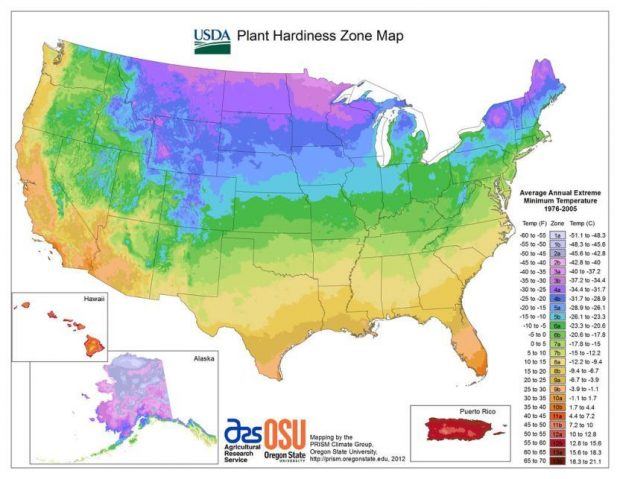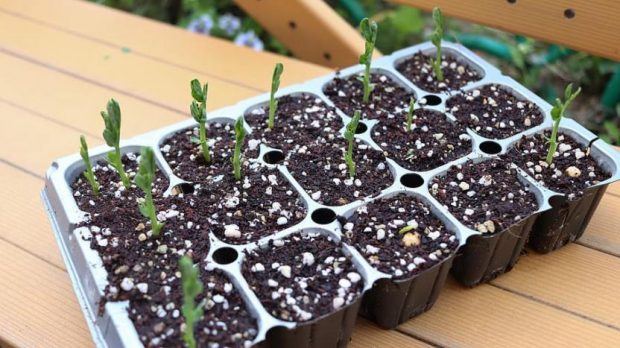Looking for a pot of gold at the end of a rainbow? Plant a rainbow of vegetables, and your pot will be overflowing with golden potatoes, corn, and more. Creating a colorful vegetable garden is one way to inspire children to try new, healthy foods, setting them on a lifelong path for adventurous eating.
But allowing them to choose colorful veggies to plant is only the first step in creating a sustainable family garden. Here are some other considerations to ensure the success of your family’s hard work digging in the dirt.
Benefits of Family Gardening
Along with getting kids outdoors (and off screens), family gardening has the benefit of teaching kids about delayed gratification, planning, time management, and cooperation. It also provides a healthier diet full of phytonutrients, especially if you plant a wide variety of colorful vegetables.
How to Plant
It’s fun to look at the colorful seed packets displayed in grocery and hardware stores each spring. To set yourself up for success, research your climate. Ask the experts and decide if you should plant seeds or seedlings (seeds that have already sprouted).
You may wind up planting a mix of each, depending on your veggie choices, location of your garden, and timing of your last frost. You can also “start” your own seeds in small containers indoors, then transplant them to your garden when the weather allows.
When to Plant
Check the USDA hardiness zones for your area, which you’ll find on the backs of most seed packets.
 Experienced gardeners try to time out the optimal planting moment when the soil has had a chance to dry out from the last spring rain and after the last hard frost. Planting times vary by climate and hardiness zone, and it can be somewhat of a guessing game. Get the kids involved in research, so they feel invested in the garden from the get-go.
Experienced gardeners try to time out the optimal planting moment when the soil has had a chance to dry out from the last spring rain and after the last hard frost. Planting times vary by climate and hardiness zone, and it can be somewhat of a guessing game. Get the kids involved in research, so they feel invested in the garden from the get-go.
Where to Plant
The morning sun is best for vegetable gardens, sparing the plants the harsher, more drying afternoon sun. Once you’ve decided which areas of your yard get at least six hours of sunlight a day, you can determine if you’ll use raised garden beds or till the existing soil. Both will need added gardening soil and supplements or amendments to improve drainage and retain moisture.
Making Time to Water and Weed
Once you’ve planted the garden, create a schedule for watering, weeding, and (eventually) harvesting your bounty. Children can take turns caring for the garden or create their own mini-plots within the garden boundaries. Be prepared for the inevitable lessening of excitement for these “chores” as summer wears on. When and how much to water depends on your soil, your climate, and the condition of your soil. A common novice mistake is watering too much.
Plan Ahead for Vacation
There’s nothing worse than arriving home from a relaxing family vacation, only to find the garden in shambles. Setting automatic sprinklers is not enough. It’s important to make a detailed plan and ask a trusted friend or neighbor to look after your vegetable garden in your absence. This may include monitoring for unwanted pests. Offer to share the bounty as an incentive to ensure they care for the garden as if it were their own.
Bottom Line
Gardening does come with its share of hard work, but there are numerous benefits. First, you’ll encourage your children to eat more vegetables and less meat, which in turn will help sustain the planet by reducing carbon emissions. And you might just create a summertime tradition your family enjoys for years to come. It’s time to change an age-old proverb to “Teach a child to garden, and you’ll feed them for life.”
Who is the author?
 Christine Mahoney is a writer who occasionally steps away from her laptop to battle an arid climate and attempt gardening near mile-high Denver, Colorado. She is a frequent visitor to local farmers’ markets and farm stands, where she can enjoy the bounty but leave the work to the professionals.
Christine Mahoney is a writer who occasionally steps away from her laptop to battle an arid climate and attempt gardening near mile-high Denver, Colorado. She is a frequent visitor to local farmers’ markets and farm stands, where she can enjoy the bounty but leave the work to the professionals.




![women [longevity live]](https://longevitylive.com/wp-content/uploads/2020/01/photo-of-women-walking-down-the-street-1116984-100x100.jpg)










